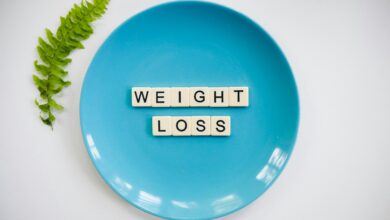11 Smart Things To Do With Your Spare Change
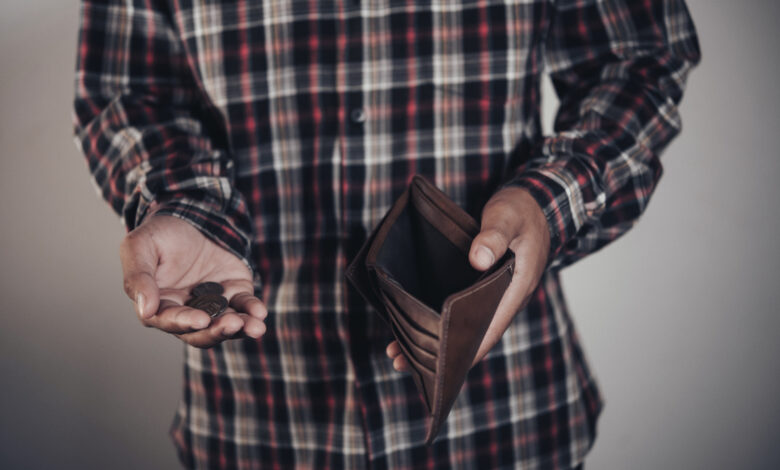
So, you’ve got a handful of coins sitting in your car’s cup holder, a few crumpled dollar bills in your jacket pocket, and maybe some change rattling around in that drawer everyone has but nobody talks about.
What’s your move? If you’re like most people, that spare change either disappears into the vending machine abyss or funds an impromptu coffee run you didn’t really need.
Here’s the thing: those random coins and bills might seem like pocket lint, but they’re actually tiny soldiers in your financial army.
I’m not saying you’ll retire off your couch cushion findings, but you’d be surprised how quickly spare change adds up when you actually pay attention to it.
I used to treat loose change like Monopoly money. Found a five-dollar bill in my jeans? Sweet, that’s a burrito. Got back three dollars in change from the grocery store? Candy bar time.
Then I started tracking where that “free money” actually went, and let me tell you, it was embarrassing. Hundreds of dollars a year just evaporating on stuff I couldn’t even remember buying a week later.
Once I figured out some genuinely smart ways to use that spare change, everything shifted. My emergency fund grew faster, I paid off debt quicker, and I even funded a weekend trip without touching my main budget. Not bad for what used to be burrito money, right?
Let’s talk about what you can actually do with your spare change that won’t make future-you shake their head in disappointment.
What To Do With Extra Money
When you don’t have a game plan for loose change, it vanishes. Poof. Gone. Like socks in the dryer, except at least missing socks are a mystery. Where your spare change goes is usually just sad impulse purchases.
Here are some genuinely useful ways to put that money to work instead of letting it fund your third energy drink of the day.
1. Pay Off A Small Debt
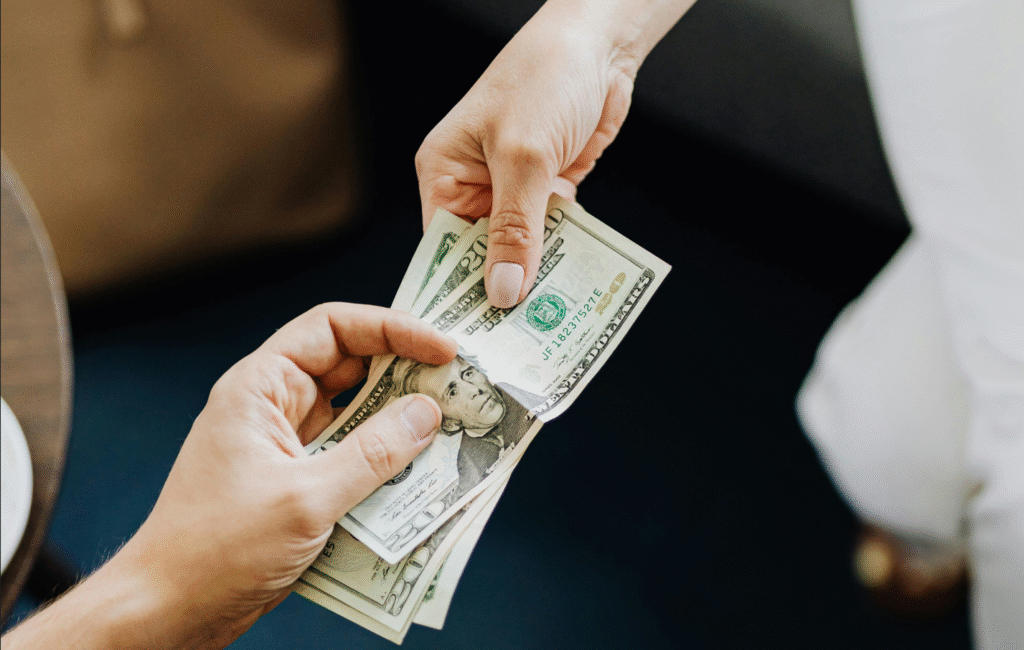
Debt sucks. There’s really no polite way to put it. Whether you’re dealing with credit cards, student loans, or that money you borrowed from your sister three years ago (she remembers, by the way), getting out of debt faster should be a priority.
Your spare change can actually help with this. I know what you’re thinking: “How is $20 in quarters going to make a dent in my $5,000 credit card balance?” Fair question. But here’s the math that changed my perspective.
Let’s say you collect an average of $30 per month in spare change. That’s $360 per year. If you throw that extra $360 at a credit card with an 18% interest rate, you’re not just paying down $360 of principal.
You’re also saving yourself about $65 in interest charges over the life of that debt. That’s a free dinner right there, just for being smart with your loose change.
The psychological win is even bigger. Every extra payment, no matter how small, brings you closer to freedom. I used to add my spare change to my minimum credit card payment every month, and watching that balance drop faster than expected was genuinely motivating.
Plus, if you’ve got multiple debts, you can use the debt snowball method and knock out your smallest balance first with collected spare change. That quick win builds momentum for tackling the bigger stuff.
2. Stock Up On Supplies
Running out of toilet paper at the worst possible moment is a special kind of panic. Same goes for laundry detergent, trash bags, or whatever essential item you suddenly need at 10 PM on a Sunday.
Your spare change stash can be your “household essentials fund.” Instead of scrambling to cover these purchases from your regular budget, you’ve got a dedicated pile of cash ready to go.
I keep a jar in my kitchen specifically for this. Every time I come home with loose change, it goes straight in. When the jar gets full (usually takes about two to three months), I take it to a Coinstar machine or my bank and use that money for a big stock-up trip.
Here’s a pro tip: combine your spare change fund with sales and bulk buying. Wait for a good sale on the stuff you use regularly, then hit the store with your collected cash. You’ll get more bang for your buck, and you won’t have to think about buying dish soap again for six months.
The beauty of this approach is that it doesn’t feel like “spending” because you’re using found money for necessary purchases. Your regular budget stays intact, and your pantry stays full. Win-win.
3. Learn Something New

Your brain is probably the best investment you’ll ever make. Unlike your car, it actually gets better with use instead of depreciating.
Spare change can fund all kinds of learning opportunities. Online courses on platforms like Udemy or Skillshare often cost less than $50. Community college classes, local workshops, or certification programs might run a bit more, but your collected change can at least cover the registration fee or materials.
I used my spare change jar to pay for a financial modeling course a few years back. Cost me about $40, and the skills I learned literally helped me negotiate a higher salary at my next job. That’s a pretty solid return on investment for what used to be gas station snack money.
The learning doesn’t have to be career-focused either. Want to learn guitar? A beginner’s online course costs about the same as two months of collected spare change. Interested in photography? Use that money for a local workshop or a book that teaches the fundamentals.
Knowledge compounds over time. The stuff you learn today makes you more capable tomorrow, which opens doors you didn’t even know existed. And funding that growth with money you would’ve otherwise wasted? That’s just smart.
4. Invest In Hobbies
All work and no play makes you a very boring person at parties. Trust me on this one.
Hobbies aren’t frivolous. They’re actually essential for mental health, stress management, and general life satisfaction. But they often require some upfront investment, which is where your spare change comes in handy.
Love painting but can’t justify spending “real money” on art supplies? Your spare change jar disagrees. Collected $75 over a few months? That’s enough for quality brushes, canvases, and paints to get started.
Want to get into woodworking, photography, gardening, or literally any other hobby? Start small with your spare change fund. You don’t need to drop $500 on professional equipment right away. Begin with the basics, funded by money that was basically invisible to your budget anyway.
I funded my entire home coffee setup this way. Started collecting spare change with the goal of buying a decent grinder. Took about four months to save up $120, but now I make better coffee at home than most cafes serve, and I’m saving money long-term by not hitting up Starbucks every morning.
Hobbies also have this sneaky way of sometimes turning into side hustles. That painting hobby might lead to selling art online. The woodworking could become custom furniture orders. Not saying it will happen, but it’s a nice bonus when your relaxation activity starts generating income.
5. Finance Better Health

Healthcare in many places is expensive enough to make you sick just thinking about it. But investing in preventive health and fitness? That’s actually one of the smartest financial moves you can make.
Gym memberships, fitness classes, or personal training sessions all cost money. Some gyms offer monthly memberships for $30-50, which is totally doable with a few months of spare change collecting.
But health investment goes beyond just physical fitness. Mental health matters too. Therapy sessions, meditation app subscriptions like Headspace or Calm, or even just books on mental wellness can all be funded through your spare change stash.
I used collected change to pay for a three-month gym trial. Figured if I hated it, I wasn’t out any “real” money. Turns out I didn’t hate it, and that trial turned into a long-term membership that’s genuinely improved my life. But starting with spare change made the commitment feel less scary.
Here’s the financial angle that really matters: preventive health care saves you massive amounts of money down the road. Regular exercise reduces your risk of chronic diseases.
Better mental health means fewer sick days and higher productivity. You’re literally investing spare change now to avoid five-figure medical bills later.
Plus, when you fund health stuff with found money, it doesn’t feel like a sacrifice. You’re not choosing between gym membership and groceries. You’re using money that would’ve probably funded impulse purchases anyway.
6. Buy Books
Books are ridiculously underrated as investments. For less than the cost of a mediocre lunch, you can access decades of someone’s expertise, research, and insights.
If you’re a student, textbooks probably eat up a concerning chunk of your budget. Spare change can offset some of that pain. Even saving $50-100 per semester makes a difference when you’re already stretching every dollar.
For everyone else, personal finance books and self-improvement titles are worth their weight in gold. Books like “The Total Money Makeover” by Dave Ramsey or “Rich Dad Poor Dad” by Robert Kiyosaki cost about $15-20 each. That’s like two weeks of collected spare change for information that could literally change your financial trajectory.
I buy at least one personal finance or business book per month using my spare change fund. Some have been duds, sure, but the good ones have saved me thousands of dollars through better financial decisions.
One book taught me about tax-advantaged retirement accounts I didn’t know existed. Another explained real estate investing in a way that finally made sense. Total investment? Maybe $40 across both books. Value gained? Honestly incalculable.
Used bookstores and library sales are even better deals. You can often find quality books for $2-5 each. Your spare change jar could fund an entire personal library for the cost of a few fancy coffees.
And here’s something nobody talks about: books are one of the few purchases that can actually make you money. The knowledge you gain leads to better career decisions, smarter investments, and improved financial habits. That’s a pretty solid ROI for your couch cushion findings.
7. Deflect Forgotten Costs
Life is full of annoying little expenses that sneak up on you. Parking meters, toll roads, bus fare when your car’s in the shop, late fees because you forgot to mail that bill on time. These forgotten costs are budget killers because they’re hard to predict and plan for.
Your spare change can be your defense fund against these annoying expenses. Keep some collected change in your car for parking meters and tolls. Stash some in your wallet for unexpected bus fare or vending machine emergencies (because yes, sometimes you really do need that snack).
I keep about $20 in quarters in my car at all times, all funded from collected spare change. Can’t tell you how many times this has saved me from parking tickets or the panic of not having toll money. It’s such a small thing, but it eliminates a surprising amount of stress.
Other forgotten costs include things like ATM fees when you’re desperate for cash, or convenience fees for paying bills by phone instead of online. Having a spare change fund means you can avoid some of these fees entirely by being better prepared.
The financial impact adds up faster than you’d think. If you avoid just two $35 parking tickets per year by having change ready for meters, that’s $70 saved. Add in avoided ATM fees, late charges, and other forgotten costs, and your spare change fund could easily save you $200-300 annually.
8. Start A Vacation Fund

Vacations feel impossible when you’re on a tight budget. Between rent, groceries, insurance, and all the other adult responsibilities, saving up for a trip seems like a luxury you can’t afford.
But here’s where spare change becomes your secret weapon. You’re not trying to fund the entire vacation with loose change (though that would be impressive). You’re just building a foundation that makes the trip more achievable.
Let’s say you collect an average of $40 per month in spare change. Over a year, that’s $480. Not enough for a European vacation, sure, but that could cover a weekend road trip, a few nights in a nearby city, or at least a significant chunk of a bigger trip.
I started a vacation fund with spare change about three years ago. Kept a separate jar labeled “Adventure Money” and dumped all my loose change into it. After 18 months, I had about $650 saved up.
Combined with some strategic budgeting from my regular income, that funded a long weekend at the beach that I absolutely needed for my mental health.
The psychological benefit of a dedicated vacation fund is huge. It makes the trip feel more real and achievable. Instead of vacation being this distant dream, it’s a growing pile of money sitting on your shelf, getting bigger every time you add to it.
Pro tip: open a separate savings account specifically for vacation money. Many banks let you nickname your accounts. Seeing an account labeled “Beach Trip 2025” with a growing balance is way more motivating than just having extra money sitting in your regular savings.
9. Fix Up Home Repairs
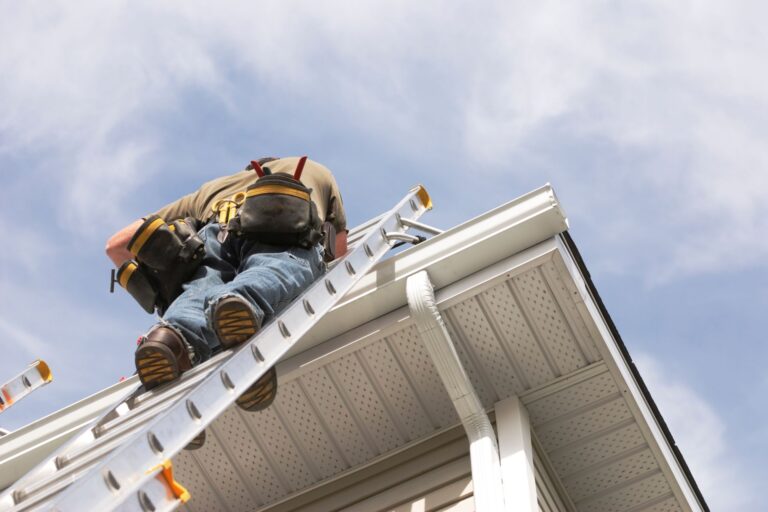
Home repairs are the worst kind of surprise expense. Your water heater doesn’t care that you just paid rent and have $47 left until payday. It’s going to break when it wants to break, and you’re going to have to deal with it.
Having a spare change fund dedicated to home repairs creates a buffer against these emergencies. Even if it doesn’t cover the entire cost, having $100-200 saved up means you’re not completely starting from zero when something breaks.
Home repair costs are no joke. Fixing a leaky faucet runs $100-300. Repairing a broken window costs $150-400. Even small stuff like replacing a doorknob or fixing a hole in the wall costs $50-100 when you factor in materials and tools.
I learned this lesson the hard way when my toilet decided to start running continuously at 2 AM on a Saturday. The repair cost $180, and I didn’t have that sitting around in my emergency fund at the time (because I’d just used it for a car repair the month before). If I’d had a spare change fund built up, that repair would’ve been way less stressful.
The beauty of funding home repairs with spare change is that it’s money you never really counted on having anyway. If you don’t need it for repairs, great! It can roll over into your emergency fund or get redirected to another goal. But when you do need it, you’ll be incredibly grateful it’s there.
10. Start A Savings Account
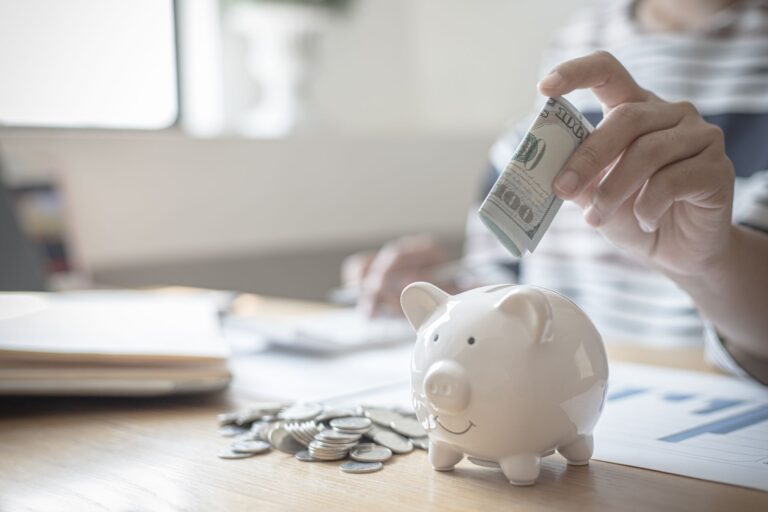
Sometimes the smartest thing to do with money is just… save it. Revolutionary concept, I know.
If you don’t have an immediate need for your spare change, starting or growing a savings account is always a solid move. Open a high-yield savings account at an online bank like Ally, Marcus by Goldman Sachs, or Discover where your money will actually earn some interest.
Current high-yield savings accounts offer around 4-5% interest (rates change, obviously, so check current offerings). That means your spare change doesn’t just sit there looking pretty. It’s actively growing, earning you free money just for having it in the right place.
Let’s run some quick math. Say you collect and deposit $50 per month in spare change into a savings account earning 4% annual interest. After one year, you’ll have about $612 instead of just $600. That extra $12 is free money, and it compounds over time.
I treat my spare change savings account as my “opportunity fund.” It’s not quite my emergency fund (that’s separate and more substantial), but it’s money I can use when unexpected opportunities pop up.
Concert tickets for my favorite band? Opportunity fund. Flash sale on something I’ve been wanting? Opportunity fund. Friend invites me on a last-minute road trip? You guessed it, opportunity fund.
The key is keeping this money separate from your regular checking account. If it’s too accessible, you’ll spend it on random stuff. But if it’s in a dedicated savings account, it feels more intentional and protected.
11. Donate It
Here’s something that doesn’t get talked about enough: giving money away actually feels really good. Like, genuinely, scientifically proven to boost your mood kind of good.
If you’ve got your financial basics covered and don’t have an urgent need for your spare change, donating it to a cause you care about is a meaningful option.
Your $50 in collected quarters might not seem like much to you, but to the right organization, it could provide meals for a family, school supplies for kids, or support for critical research.
There are tons of reputable charities you can support. Organizations like Doctors Without Borders, American Red Cross, St. Jude Children’s Research Hospital, and Feeding America do incredible work and make every dollar count.
Before donating, do a quick check on Charity Navigator or GuideStar to make sure the organization is legit and uses donations effectively. You want your spare change going to actual programs, not just administrative overhead.
Local donations can be just as impactful. Food banks, homeless shelters, animal rescues, and community organizations in your area often need support and might not have the fundraising machinery that big national charities have.
I donate my spare change every December to a local organization that provides Christmas gifts for kids whose families are struggling financially. It’s become a tradition I actually look forward to, and it feels way better than whatever impulse purchases that money would’ve funded otherwise.
Plus, donations are often tax-deductible if you itemize, so you might even get a small financial benefit come tax time. Not the main reason to donate, obviously, but it’s a nice bonus.
5 Best Places To Find Spare Change
Alright, so you’re sold on actually doing something smart with your spare change. Great! But where exactly do you find this magical money we’ve been talking about?
Spare change is everywhere once you start looking for it. Here are the most reliable spots to check.
1. Around Your Home
Your house is basically a spare change goldmine if you know where to look. Seriously, you’re probably sitting on $20-50 right now without even realizing it.
Start with the obvious spots: couch cushions, chair cushions, under seat cushions. I don’t know what it is about furniture cushions, but they’re like black holes for loose change. Lift them up and prepare to be mildly surprised by what you find.
Check coat pockets, especially jackets you haven’t worn in a while. Winter coat season ending? Go through all your pockets before storing them. I found $37 in various pockets last spring when I was putting away my winter stuff. That’s a free pizza right there.
Your car is another treasure trove. Check the cup holders, under the seats, in the door pockets, and in that weird storage compartment that every car has but nobody really uses. Get a flashlight and really look around. You’ll find coins you forgot existed.
Other home spots worth checking: junk drawers (everyone has at least one), nightstands, dresser tops, laundry room surfaces, and anywhere near where you empty your pockets when you get home.
Make it a habit to do a spare change sweep of your home once a month. Set a reminder on your phone if you need to. Those monthly sweeps can easily net you $15-30, which adds up to $180-360 per year. Not bad for money you already had.
2. At Laundromats
If you use a laundromat, you’re in luck. These places are surprisingly good spots for finding spare change, mainly because people are juggling detergent, clothes, and quarters, and stuff inevitably gets dropped or forgotten.
Check around the machines, especially on top of washers and dryers where people set their stuff down. Look in the coin return slots, too. Sometimes quarters get stuck and people just walk away.
The area around the change machine is another good spot. People fumble their quarters all the time when they’re trying to get change for the machines.
Obviously, don’t take money that clearly belongs to someone who’s still there doing their laundry. That’s just theft and also makes you a jerk. But money that’s been clearly abandoned? Fair game.
I found a five-dollar bill on the floor of my laundromat once. Just sitting there, nobody around, clearly been there a while. Waited a few minutes to see if anyone came back for it, and when nobody did, boom, free money. Funded my next laundry trip.
3. Around Vending Machines
Vending machines are notorious for eating people’s money, but they also occasionally spit out extra change or drop coins during transactions. This makes the area around vending machines a decent spot to check for spare change.
Look on the ground near the machine, especially in the corners where coins might roll. Check the coin return slot, too. Sometimes change gets stuck there and previous users just gave up on retrieving it.
The best vending machines to check are the ones in high-traffic areas like office buildings, schools, or apartment complexes. More transactions mean more opportunities for dropped or forgotten change.
This isn’t going to make you rich or anything. You might find a quarter here, a dime there. But it adds up over time, and if you’re already at the vending machine anyway, might as well take a quick look around.
4. In Parking Lots
Parking lots are surprisingly good spots for finding spare change. People are constantly getting in and out of their cars, digging for parking meter money, and generally fumbling with coins and bills.
The best spots to check are near parking meters, around shopping cart return areas, and close to car doors where people are getting in and out. Coins fall out of pockets, roll under cars, and just generally end up on the ground.
I make it a habit to keep my eyes on the ground when I’m walking through parking lots anyway (partly for safety, partly for spare change hunting). You’d be surprised how often you spot a quarter or two just sitting there.
One time I found a crumpled $10 bill in a grocery store parking lot. Looked around to see if anyone was frantically searching for lost money, didn’t see anyone, so I kept it. That funded my groceries for the week in a small but meaningful way.
Pro tip: parking lots are especially fruitful after big events, busy shopping days, or holiday rushes. More people means more dropped change. Hit up the mall parking lot the day after Black Friday and you might get lucky.
5. Phone Booths
Okay, real talk: phone booths are basically extinct at this point. If you’re under 25, you might not even know what they are beyond seeing them in old movies.
But if you happen to spot one of these relics still standing, check the coin return slot. Back in the day, people regularly forgot their change after making calls. Even now, the few remaining phone booths occasionally have forgotten coins.
This isn’t a reliable source of spare change anymore, obviously. But if you see a phone booth, it takes two seconds to check, and you might get lucky. Consider it more of a fun treasure hunt than a legitimate spare change strategy.
The broader point here is to keep your eyes open for unusual spots where people might have left change behind. Airport charging stations, arcade machines, public transit ticket machines, any place where people are making transactions with coins or bills can potentially yield some spare change.
Final Thoughts
Look, spare change isn’t going to solve all your financial problems. Let’s be realistic here. You’re not going to retire early off the quarters you find in your couch cushions.
But here’s what spare change can do: it can be the difference between paying off debt a few months earlier or a few months later. It can turn a vacation from impossible to possible. It can fund small improvements in your life that add up to something meaningful over time.
The real value of paying attention to spare change isn’t just the money itself. It’s the mindset shift that comes with it. When you start seeing value in the small amounts, when you start being intentional about every dollar (and every quarter), that awareness spreads to the rest of your financial life.
So yeah, start collecting that spare change. Throw it in a jar, set a goal for it, and actually follow through on using it for something smart instead of letting it disappear into random impulse purchases.



